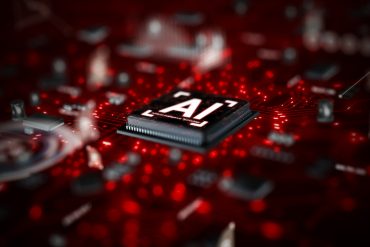
ChatGPT and its linguistic prowess are delivering benefits today, but the true value of AI lies in its ability to empower engineers and operations teams, enabling them to navigate the complexities of modern networking with confidence and clarity.
In the history of technological evolution, certain milestones stand out, marking paradigm shifts that redefine our understanding of what is possible. The release of ChatGPT in November 2022 epitomized such a moment, where the lines between reality and speculation converged, and the world was thrust into a future where artificial intelligence (AI) finally lived up to its name.
ChatGPT’s debut sparked a flurry of reactions, oscillating between delight and apprehension. Beneath the veneer of excitement lay an undercurrent of caution, with warnings of potential pitfalls and ethical dilemmas.
While in the realms of writing, photography and video production, the concern around disinformation is real, and there are many more practical areas where guardrails could constrain generative AI’s more unreliable aspects. From a telecommunications perspective, for instance, large language models (LLMs) might help to simplify everyday network operations, improve staff productivity, and reduce the learning curve for new products.
Empowering Natural Language with ChatGPT
At the heart of ChatGPT’s allure lies its proficiency in natural language processing (NLP). It could allow us to transcend the boundaries of traditional command-line interfaces (CLI) commonly used in network operations. Imagine fluid, conversational interactions instead of the alphabet soup that we are forced to master today.
For engineers and operations teams accustomed to the rigidity of CLI commands, the transition to a ChatGPT-driven interface might offer a more intuitive and error-reduced approach to network management.
With ChatGPT at their disposal, engineers could issue directives in everyday language, simplifying tasks and expediting processes. Whether it’s querying network information or configuring parameters, ChatGPT’s linguistic acumen can transform mundane tasks into seamless interactions, reduce the cognitive load on operators, and minimize the risk of errors. The days of cryptic commands and arcane syntax could simply fade away.
See also: ChatGPT Use Cases for Technology Companies
Navigating the Nuances with ChatGPT Contextual Precision
But what about those guardrails? Amidst the euphoria of ChatGPT’s capabilities, concerns about its propensity for ‘hallucinations’ still loom. The solution to this challenge lies in contextual training – the art of feeding relevant, correct information to the AI to ensure accuracy and reliability. Understanding that ChatGPT’s responses are contingent on the context provided, the key is to train it on a constrained set of information.
An interesting first approach was conducted in early 2023 by a team responsible for their IP network operating system, SR Linux. They directed ChatGPT to model its responses based on SR Linux documentation, coupled with real-time telemetry and operational data from the network. This ensured that the AI remained tethered to the intricacies of their specific network infrastructure and didn’t start inventing answers based on network operations in general.
This contextual grounding proved to be a secure bulwark against erroneous responses, safeguarding the integrity of the system and instilling confidence in its capabilities.
See also: ChatGPT Bandwagon and Other Mistakes Companies are Making with AI in Automation
Unleashing Network AIOps: A Paradigm Shift in Operations
The integration of ChatGPT into IP network operations heralds a larger shift to AI for operations (AIOps), which leverages AI and machine learning to automate and optimize many network operations.
Network AIOps capabilities can be enabled via an operational support system (OSS), business support system (BSS), network management, or network automation platform. They can also be directly integrated into a networking hardware platform like an IP router or Ethernet switch. The end goal is to improve the human operator experience and enhance the day-to-day processes best suited to the operator’s unique business needs.
Network AIOps promises a plethora of benefits, ranging from the automation of manual tasks to the expedited detection and resolution of faults. By harnessing the power of AI, networks can streamline operations, reduce downtime, and enhance the overall efficiency of their network infrastructure.
A fast-growing area of AIOps is root-cause analysis and resolution. Machine learning software can be trained on historic telemetry data to detect anomalies and suggest root causes for these variances or events. The exact origin of the fault and the recommended remediation could be communicated naturally by ChatGPT, including the exact configuration change required. Natural language-based queries by operators could enable them to drill down further on the root cause and explore different dimensions of the network state.
Network digital twin capabilities could also be deployed within a fabric management system sandbox to sanity check the proposed change, releasing it quickly to production through the IT service management (ITSM) workflow, once verified. This whole process could be full automated from start to finish, facilitating predictive repairs before customers become aware of them.
Agile Innovation: Navigating the Path to Progress
The ability to quickly adapt ChatGPT or other AI capabilities into a network operating system (NOS) is in part dependent on how open the NOS architecture is.
Innovation favors flexibility and extensibility.
For example, a Linux-based OS could feature an open microservices architecture, allowing users to leverage industry-standard protocols like gRPC and protocol buffers to integrate ChatGPT into the NOS seamlessly and quickly.
Modular approaches to building operational software systems not only rapid development and deployment, but also leverage the broader efforts in AI development from companies like OpenAI.
Pioneering Progress: Charting the Course Ahead
As the world grapples with the implications of AI and its role in shaping the future, network operators are in a race to out-innovate their competition.
Charting a course towards a more efficient and intelligent network ecosystem based on AIOps is about cost efficiencies, but it will also enable operators to master the growing complexity of diverse communications services.
While at the moment, the spotlight may shine the brightest on ChatGPT and its linguistic prowess, the true value of AI lies in its ability to empower engineers and operations teams, enabling them to navigate the complexities of modern networking with confidence and clarity.
In embracing the dawn of AI-driven network operations, they will push the boundaries of technological innovation, paving the way for a future where humans and machines collaborate seamlessly to unlock new frontiers of possibility. As we stand on the precipice of this technological inflection point, one thing remains abundantly clear – the journey towards a smarter, more connected future has only just begun.





























